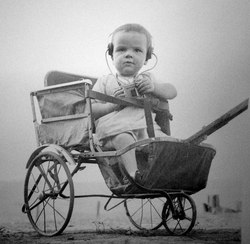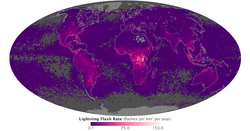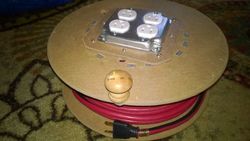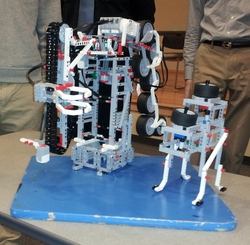 April 8, 2015 Editor: Ward Silver, NØAX | ||||||
IN THIS ISSUE
NEW HF OPERATORS - THINGS TO DO Have you been licensed three years or less? If so, put some "shack time" on your calendar for April 19th and the ARRL Rookie Roundup's SSB edition. Everybody will be looking for the "rookies" so call "CQ Rookie Roundup" and see who answers! Or tune around and call if you'd rather jump in that way. For those of us OTs (Old Timers), we'll be calling "CQ Rookies". BULLETINS Beginning with the June QST, there will be a new trail boss in the Contest Corral as Bruce Draper, AA5B takes the reins. Contest managers, please note that Bruce will be collecting data directly from the online WA7BNM Contest Calendar services so make sure your information is correct on that website. BUSTED QSOS Dick K4XU notes that the FOC (First-class Operator's Club) Spring and Fall QSO Parties are open to anyone. It's only the FOC Marathon (first weekend in February) that is restricted to members-only. CONTEST SUMMARY Complete information for all contests follows the Conversation section April 11-12
April 18-19
An orange ogre? No gear, no rage - a goner! The Florida QSO Party will once again be featuring what is becoming a popular activity within state QSO parties - the 1-by-1 Spelling Bee. Contact Florida 1x1 stations and spell "Orange" for extra fun. Orange you glad their state isn't known for raising cauliflower? (Thanks, Chris WF3C) The rules for the ARRL June VHF Contest have been updated to reflect the changes which now allow self-spotting for ARRL VHF+ contests. There is also an FAQ to help explain the changes and what information can and cannot be exchanged online. (Thanks, ARRL Contest Branch Manager, Matt W1MSW)
The 2015 Dayton Hamvention Contest University course schedule has been posted. This all-day series of courses covers everything - technical, operating, ergonomics, ethics...everything a contester needs to know! The friends-of-CW organization, FISTS, has a new web URL for their North American chapter. You can find links to FISTS chapter around the world at www.fistsna.org/links.html. The Delaware QSO Party recently changed dates to the same weekend at the regional 7QP (7th District QSO Party) and NEQP (New England QSO Party) as well as the Indiana QSO Party. If you work Delaware stations, be aware that the Delaware sponsors require a separate log without contacts from the other contests mixed in. Also, the county abbreviation NEW can be confused with counties from the other contests. Both issues should be resolved for the 2016 contest. (Thanks, Rich WD3C) The 21st Annual PNWVHFS Conference is now accepting online registration for the October 10-11 event to be held in Issaquah, Washington. (Thanks, Barry K7BWH) Dave W9PA reports that after changing his popular TELNET server domain from w9zrx.net to w9pa.net in 2012, he has dropped the w9zrx.net domain, effective 30 March. Thus, cluster users will no longer be able to log on to dxc.w9zrx.net for spots. He requests that logging software authors and those who maintain lists of cluster servers please drop w9zrx.net and update their information to the new w9pa.net. Sprechen sie Deutsch und English? If you have some time to translate an article or two from the DARC magazine CQ DL, there are a few which would make good projects for topics for the ARRL Handbook or ARRL Antenna Book. Please contact the book's editor (NØAX) if you are interested in helping out.
Dick K6KR was outside when the FedEx delivery man drove up and asked about the tower - Rohn 55 with 4 monobanders and 70 feet tall. After Dick said it was antennas for amateur radio, the delivery man thought a moment and asked, "what does a professional one look like?" Web Site of the Week - No flash in the pan, NASA has published a new lightning map for those of you interested in putting up some towers. Be glad you don't live in the Serengeti! WORD TO THE WISE Muntzing - the practice of removing components until the device stops working as a way of production cost-cutting. Madman Muntz was famous for selling TVs for less than $100 "back in the day" when the usual set cost significantly more. And generally lasted considerably longer without a visit from the TV repairman, but let's not quibble. The World Wide Radio Operators Foundation is presenting a webinar by Craig Thompson, K9CT on "Planning Your Contest Station," on April 15th at 0100 UTC. (That's Tuesday evening in North America.) Craig will reveal lessons learned from building the K9CT contest station through the process of finding land, selecting the antennas, and the shack layout. Craig's wisdom is a must for anyone looking to build a contest station or improve their existing station. (Thanks, Ken K4ZW) In case you didn't make the trip to Finland for the Contest Club of Finland's annual holiday DX and Contest Cruise, you can still view some of the great presentations online on the OH DX club's website. Jukka OH6LI takes on contest stations of 2020, there is a presentation on WRTC-2018 by the German delegation, plus some solar savantry by OH1ZAA and OH6BG. (Thanks, Jukka OH6LI) The April 2015 issue of CQ Magazine containing the results for the 2014 CQ WW DX Contest SSB is now available for electronic subscribers via Zinio. The scores are available from the online database on the CQ WW web site. (Thanks, CQ WW DX Contest Director, Randy K5ZD)
If you have old contest logs on paper or in spreadsheet format and would like to convert them to ADIF for logging programs, including Logbook Of the World, W8TN has written BasicLog to ease the process using a spreadsheet. (Thanks, Paula K9IR) I've seen lots of posts on various reflectors, blogs, and personal media pages about receiving a plaque for one's contest efforts - hip-hip-hooray! Now take a minute to send a note of thanks to the plaque sponsor. Thank-you notes are apparently so rarely received that when one does show up, it is remark-worthy. Don't skimp on showing your appreciation to that someone who made your day! OPERATING TIP Get radioactive! The Contest Club of Ontario offers the sCCOre Award to its members based on a yearly tally. All eligible contest scores from January 1 to December 31 count towards the award for that year. Initial sCCOre awards and endorsements are processed once a year and are cumulative. This is a great way to encourage and sustain interest and activity - check it out! Another great year-long activity enhancer is the "QSO every day" approach typified by the Hampden County Radio Association's Q-a-Day Contest. Whatever you choose to do, keep the fun building by encouraging folks to get on the air frequently. Activity breeds more activity and better operating skills. (Thanks, Mike VE3GFN and Tom K1KI) So - you have interested someone in ham radio through your description of technical adventures on the airwaves. There are lots of individual specialty websites - here's a new tech portal from the ARRL that opens doors to many ARRL technical resources, even for non-members. Its goal is to introduce ham radio from the techie's perspective while not drowning them with a "ham radio firehose" - at least not right away. Send those proto-hams right over! From the latest ARRL Propagation Bulletin, ARLP014, comes this link to a graphic comparison of the latest four solar cycles. The site has plenty of solar analysis, data, and images to keep the most ardent and solar-philic ham enthralled. Not more than a click away, you can also find this interesting site which maintains a worldwide digital ionogram database. Check the station list for the location of each project or facility. (Thanks, Perry WY1O) To be sure you follow rules about self-spotting via a CW Skimmer, both CW Skimmer and Skimmer Server software have built-in protection against self-spotting, so long as you enter your call sign on the Operator tab in either program. Because of the change in the design of RTTY Skimmer Server, this easy solution is not available. Happily, there are two quick and easy solutions: (1) Enter your own call in the Bad Call list on the Filters tab of the Aggregator and (2) Add your call to the black.lst text file found in C:Users[your login]AppdataRoamingAfreetReference (Thanks, Pete N4ZR) In the latest issue of the DKARS Magazine shares news of RXGen, a signal source with stable and calibrated output, flat from 2MHz to 2400MHz with an absolute level accuracy of +/-0.5dB. This is a valuable aid for aligning receivers and preamplifiers, cable and accessory testing, filter response measurement and more. Just in time for the Field Day Festival of Cable Snarls comes this snarl-stopper for ac power cords - a do-it-yourself extension cord reel seen below. And when you're repairing (or decommissioning) a gadget which didn't make it home alive, consider pointing this Instructable on de-soldering through-hole parts at someone just getting into electronics through the take-apart door.
On the subject of making your CQ and exchange audio messages as clean and effective as possible, you might want to check out an audio editing program, such as Audacity. Jim K9YC posted a video how-to for using Audacity in this way so there's no reason to let badly recorded audio cut your intelligibility and, consequently, your QSO rate! (The video is a 300 Mbyte download, so it might not be a good choice for a dial-up connection...) After you do record crisp messages, Bill K4XS points out that you should listen to your transmitted audio with a second receiver - not the RF monitor in the transmitting radio. You can transmit into a dummy load at low power and listen to what you sound like on the air. Adjust your audio channel controls until your signal sounds clear and does not splatter. If your MFJ-259B antenna analyzer took a hit or required repair, Tom W8JI posted this set of instructions on calibrating these popular units. Using microwave oven high voltage (HV) diodes is an inexpensive way to make a high-voltage rectifier for a homebrew amplifier but how do you test them? Using the diode test function of a multimeter won't work because the HV diodes are usually made from a string of 1kV diodes. Every regular silicon diode creates a 0.6V of forward voltage drop, totaling 3 V or more from typical units. This causes the multimeter to read "open." Use a forward power source of 10 V or more, limited with a 1 kohm resistor, to test these rectifier strings. (Thanks, Val LZ1VB) Rohde & Schwarz has released another detailed, informative application note, "Intermodulation Distortion Measurements on Modern Spectrum Analyzers". While most of us don't make such measurements on a regular basis, the introductory sections on the theory of intermodulation and spectrum analyzer architecture are excellent resources for the interested reader. Technical Web Site of the Week - The free Smith Chart software SimSmith is now up to version 11.3. The new software has improved its on-screen markers and plotting functions, sweep functions, and new error and text-editing windows. If you haven't tried this software, check it out! Oh, Nothing... Every parent knows that phrase, the usual response to "What are you/they doing down/in/over there?" Come to think of it, so do most spouses of hams! While sometimes nothing = getting into trouble, it can just as easily be nothing = tinkering. Ah yes, tinkering, defined as screwing around with something mechanical, electrical, buildable, re-programmable, or disassemble-able, or just about anything-else-able that holds an interest for us. Recently, Tom K1KI sent me a link to the New York Times article "Learning through Tinkering," presenting some ideas about how kids learn better and more broadly when not led too closely through pre-planned activities. The basic idea is to teach them how to use some tools and train them on certain skills, then give them a problem and let them figure out the rest on their own. Many of us grew up more or less in that environment; a shop, a garage, at a computer terminal, in a basement, in a barn - you get the idea. Although the idea doesn't work for everyone, it frees the kids to explore if they wish and doesn't seem to hurt those more comfortable with step-by-step learning. There needs to be some of both - kids and learning processes. Ham radio is no different: building a step-by-step Heathkit was for many the launch pad to low orbit of building things from magazine directions. Escape velocity to the design-and-build reaches of outer space sometimes followed.
I am not suggesting that we throw out traditional instruction in favor of "free-range self-teaching" - both are necessary for certain stages of growth. In fact, an alternating sequence of open-ended exploration followed by closely focused instruction is a great path to follow. Growing minds (of any age) need guidance just like they need room to maneuver. The high-school students in the Maker Space club I mentored were happy to just take things apart for a while. Soon I pointed out to them there were enough parts to make a dc power supply - but that took some equations and some instruction and some Heathkit-style hand-holding. Then it was back to unsoldering components for a while. The robotics competition I mentioned in the previous issue provides fertile ground for the student teams to stretch their mental legs while getting some focused direction from mentors and judges. The students didn't have to have any engineering training or background - just a willingness to work through a problem. Ham radio can be a lot like that, with interest building gradually from "that looks like fun" through, "How does that work?" to getting a license and on to station-building and operating. The Elmers among us are responsible for supplying guidance as needed but not so much as to stifle the natural creative tendencies and turn what should be play into an adult-sanctioned (and dominated) chore. What comes out the other end? Projects like those of a Boy Scout who put the local airport comm channels on a low-power AM broadcast channel so folks could listen to the traffic from their cars in the parking lot. It really doesn't have to be all about ham radio - just get them going however you can. Teach them the basics, turn them loose, then answer questions and feed them resources - even stuff to just tear apart. And maybe you'll hear that classic response to your curiosity between bursts of static, drilling noises, and the rattle of tools on a bench - "Oh, nothing..." 73, Ward NØAX 8 April through 21 April 2015 An expanded, downloadable version of QST's Contest Corral in PDF format is available. Check the sponsor's Web site for information on operating time restrictions and other instructions. HF CONTESTS ARRL Rookie Roundup--Phone, from Apr 19, 1800Z to Apr 19, 2359Z. Bands (MHz): 3.5-28. Exchange: Both calls, name, check, S/P XE# or "DX". Logs due: See web. Rules Japan International DX Contest--CW, from Apr 11, 0700Z to Apr 12, 1300Z . Bands (MHz): 1.8-28. Exchange: RST, JA prefecture or CQ Zone. Logs due: 30 days. Rules Straight Key Weekend Sprintathon--CW, from Apr 11, 1200Z to Apr 12, 2359Z. Bands (MHz): 1.8-28, 50, Monthly on the Saturday following the 6th of the month. Exchange: RST, QTH, name, member nr if member. Logs due: 5 days. Rules New Mexico QSO Party--Phone,CW,Digital, from Apr 11, 1400Z to Apr 12, 0200Z. Bands (MHz): 1.8-28, 50, CW-1.82,3.55,7.045,14.05,21.05,28.05,50.095; SSB-1.85,3.815,7.26,14.28,21.38,28.38,50.13 MHz. Exchange: Call sign, name, and NM county or S/P/C. Logs due: 14 days. Rules Georgia QSO Party--Phone,CW, from Apr 11, 1800Z - See website. Multiple time periods. Bands (MHz): 1.8-28, 50, CW 1.815,3.545,7.045,14.045,21.045,28.045,50.095; Phone 1.865,3.810,7.225,14.250,21.300,28.450,50.135 MHz. Exchange: RS(T), S/P/C or GA county. Logs due: May 15. Rules Yuri Gagarin DX Contest--CW, from Apr 11, 2100Z to Apr 12, 2100Z . Bands (MHz): 1.8-28. Exchange: RST, ITU Zone. Logs due: May 14. Rules International Vintage Contest--Phone,CW, from Apr 12, 1200Z to Apr 12, 1800Z. Bands (MHz): 3.5,7. Exchange: RS(T), 4-char grid square. Logs due: May 30. Rules NAQCC Monthly QRP Sprint--CW, from Apr 15, 0030Z to Apr 15, 0230Z. Bands (MHz): 3.5-14. Monthly on 2nd Tuesday or 3rd Wednesday local time (alternating). Exchange: RST, S/P/C, and NAQCC mbr nr or power. Logs due: 4 days. Rules Holyland DX Contest--Phone,CW,Digital, from Apr 17, 2100Z to Apr 18, 2100Z. Bands (MHz): 1.8-28. Exchange: RS(T), serial or Israel district. Logs due: May 31. Rules TARA Skirmish Dig Pfx Contest--Digital, from Apr 18, 0000Z to Apr 18, 2359Z. Bands (MHz): 1.8-28, 50. Exchange: Name, prefix. Logs due: May 16. Rules ES Open HF Championship--Phone,CW, from Apr 18, 0500Z to Apr 18, 0859Z . Bands (MHz): 3.5,7. Exchange: RS(T), serial, dupes OK once/hour. Logs due: May 1. Rules Worked All Provinces of China--Phone,CW, from Apr 18, 0600Z to Apr 19, 0559Z. Bands (MHz): 3.5-28. Exchange: RS(T) and serial or province abbreviation. Logs due: 7 days. Rules CQMM DX Contest--CW, from Apr 18, 1200Z to Apr 19, 2359Z. Bands (MHz): 3.5-28. Exchange: RST, continent, and category. Logs due: 30 days. Rules Nebraska QSO Party--Phone,CW,Digital, from Apr 18, 1200Z to Apr 19, 2300Z. Bands (MHz): 1.8-28, 50+, CW 1.805 and 35 kHz above band edge,Nov/Tech--10 kHz above band edge; Phone--1.915,3.865,7.265,14.265,21.365,28.465,146.460 MHz. Exchange: RS(T), NE county or S/P/C. Logs due: May 31. Rules Michigan QSO Party--Phone,CW, from Apr 18, 1600Z to Apr 19, 0400Z . Bands (MHz): 3.5-28. CW 45 kHz from band edge,Phone 3.825,7.200,14.250,21.300,28.450 MHz. Exchange: Serial and MI county or S/P/C. Logs due: 30 days. Rules EA QRP Contest--CW, from Apr 18, 1700Z to Apr 19, 1300Z . Bands (MHz): 3.5-28. Exchange: RST, category, M if EA QRP member. Logs due: 30 days. Rules North Dakota QSO Party--Phone,CW,Digital, from Apr 18, 1800Z to Apr 19, 1800Z. Bands (MHz): 1.8-28, 50,144, CW 1.850, 3.550, 3705, 7.050, 14.050, 21.050, 28.050; Phone 1.870, 3.850, 7.250, 14.270, 21.350, 28.450; VHF+/Digital per band plan. Exchange: RST and ND county or S/P/C. Logs due: May 15. Rules Ontario QSO Party--Phone,CW, from Apr 18, 1800Z - See website. Multiple time periods. Bands (MHz): 1.8-28, 50,144, CW 30 kHz above band edge; Phone 1.870,3.735,3.860,7.070,7.260,14.130,14.265,21.260,28.360; VHF-SSB: 50.130,52.540,144.205,146.550 MHz. Exchange: RS(T), S/P/C or Ontario QTH. Logs due: May 19. Rules Feld-Hell New Member Sprint--Digital, from Apr 18, 2000Z to Apr 18, 2200Z. Bands (MHz): 1.8-28, 50, Monthly on 3rd Saturday. Exchange: RST, S/P/C, Feld-Hell member nr. Logs due: 7 days. Rules YU DX Contest--CW, from Apr 18, 2100Z - See website. Multiple time periods. Bands (MHz): 1.8-28. Exchange: RST and ITU zone. Logs due: 30 days. Rules Run For the Bacon--CW, from Apr 20, 0200Z to Apr 20, 0400Z. Bands (MHz): 1.8-28. Monthly on 3rd Sunday night (local). Exchange: RST, S/P/C, Flying Pig nr or power. Rules VHF+ CONTESTS VHF Spring Sprints--Phone,CW,Digital, from Apr 13, 7 PM to Apr 13, 11 PM. Bands (MHz): 144. Exchange: Grid square (6-char preferred). Logs due: 14 days. Rules VHF Spring Sprints--Phone,CW,Digital, from Apr 21, 7 PM to Apr 21, 11 PM. Bands (MHz): 222. Exchange: Grid square (6-char preferred). Logs due: 14 days. Rules Straight Key Weekend Sprintathon--CW, from Apr 11, 1200Z to Apr 12, 2359Z. Bands (MHz): 1.8-28, 50, Monthly on the Saturday following the 6th of the month. Exchange: RST, QTH, name, member nr if member. Logs due: 5 days. Rules New Mexico QSO Party--Phone,CW,Digital, from Apr 11, 1400Z to Apr 12, 0200Z. Bands (MHz): 1.8-28, 50, CW-1.82,3.55,7.045,14.05,21.05,28.05,50.095; SSB-1.85,3.815,7.26,14.28,21.38,28.38,50.13 MHz. Exchange: Call sign, name, and NM county or S/P/C. Logs due: 14 days. Rules Georgia QSO Party--Phone,CW, from Apr 11, 1800Z - See website. Multiple time periods. Bands (MHz): 1.8-28, 50, CW 1.815,3.545,7.045,14.045,21.045,28.045,50.095; Phone 1.865,3.810,7.225,14.250,21.300,28.450,50.135 MHz. Exchange: RS(T), S/P/C or GA county. Logs due: May 15. Rules TARA Skirmish Dig Pfx Contest--Digital, from Apr 18, 0000Z to Apr 18, 2359Z. Bands (MHz): 1.8-28, 50. Exchange: Name, prefix. Logs due: May 16. Rules Nebraska QSO Party--Phone,CW,Digital, from Apr 18, 1200Z to Apr 19, 2300Z. Bands (MHz): 1.8-28, 50+, CW 1.805 and 35 kHz above band edge,Nov/Tech--10 kHz above band edge; Phone--1.915,3.865,7.265,14.265,21.365,28.465,146.460 MHz. Exchange: RS(T), NE county or S/P/C. Logs due: May 31. Rules Ontario QSO Party--Phone,CW, from Apr 18, 1800Z - See website. Multiple time periods. Bands (MHz): 1.8-28, 50,144, CW 30 kHz above band edge; Phone 1.870,3.735,3.860,7.070,7.260,14.130,14.265,21.260,28.360; VHF-SSB: 50.130,52.540,144.205,146.550 MHz. Exchange: RS(T), S/P/C or Ontario QTH. Logs due: May 19. Rules Feld-Hell New Member Sprint--Digital, from Apr 18, 2000Z to Apr 18, 2200Z. Bands (MHz): 1.8-28, 50, Monthly on 3rd Saturday. Exchange: RST, S/P/C, Feld-Hell member nr. Logs due: 7 days. Rules LOG DUE DATES 8 April through 21 April 2015
ARRL Information Click here to advertise in this newsletter, space subject to availability. Your One-Stop Resource for Amateur Radio News and Information ARRL membership includes QST, Amateur Radio's most popular and informative journal, delivered to your mailbox each month. Subscribe to NCJ - the National Contest Journal. Published bimonthly, features articles by top contesters, letters, hints, statistics, scores, NA Sprint and QSO Parties. Subscribe to QEX - A Forum for Communications Experimenters. Published bimonthly, features technical articles, construction projects, columns and other items of interest to radio amateurs and communications professionals. Free of charge to ARRL members: Subscribe to The ARRL Letter (weekly digest of news and information), the ARES E-Letter (monthly public service and emergency communications news), Division and Section news -- and much more! ARRL offers a wide array of products to enhance your enjoyment of Amateur Radio. Visit the site often for new publications, specials and sales. Donate to the fund of your choice -- support programs not funded by member dues! Reprint permission can be obtained by sending email to permission@arrl.org with a description of the material and the reprint publication. ACKNOWLEDGEMENTS ARRL Contest Update wishes to acknowledge information from WA7BNM's Contest Calendar and SM3CER's Contest Calendar. | ||||||
